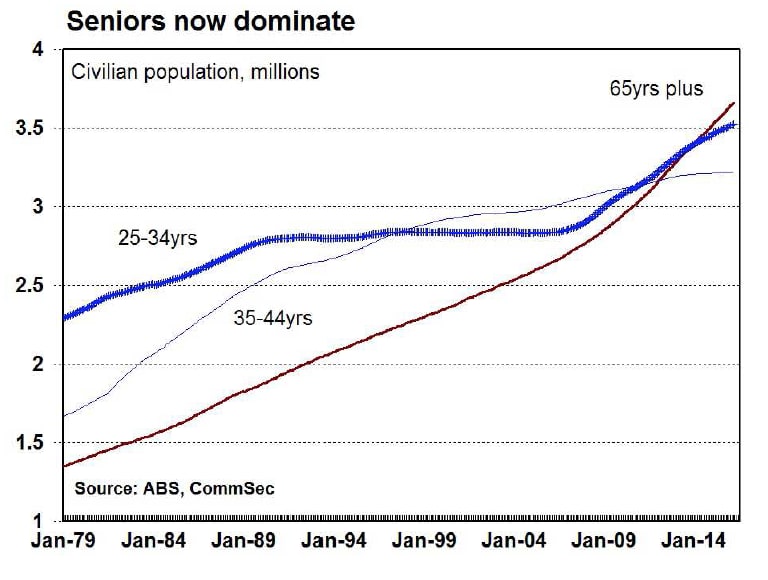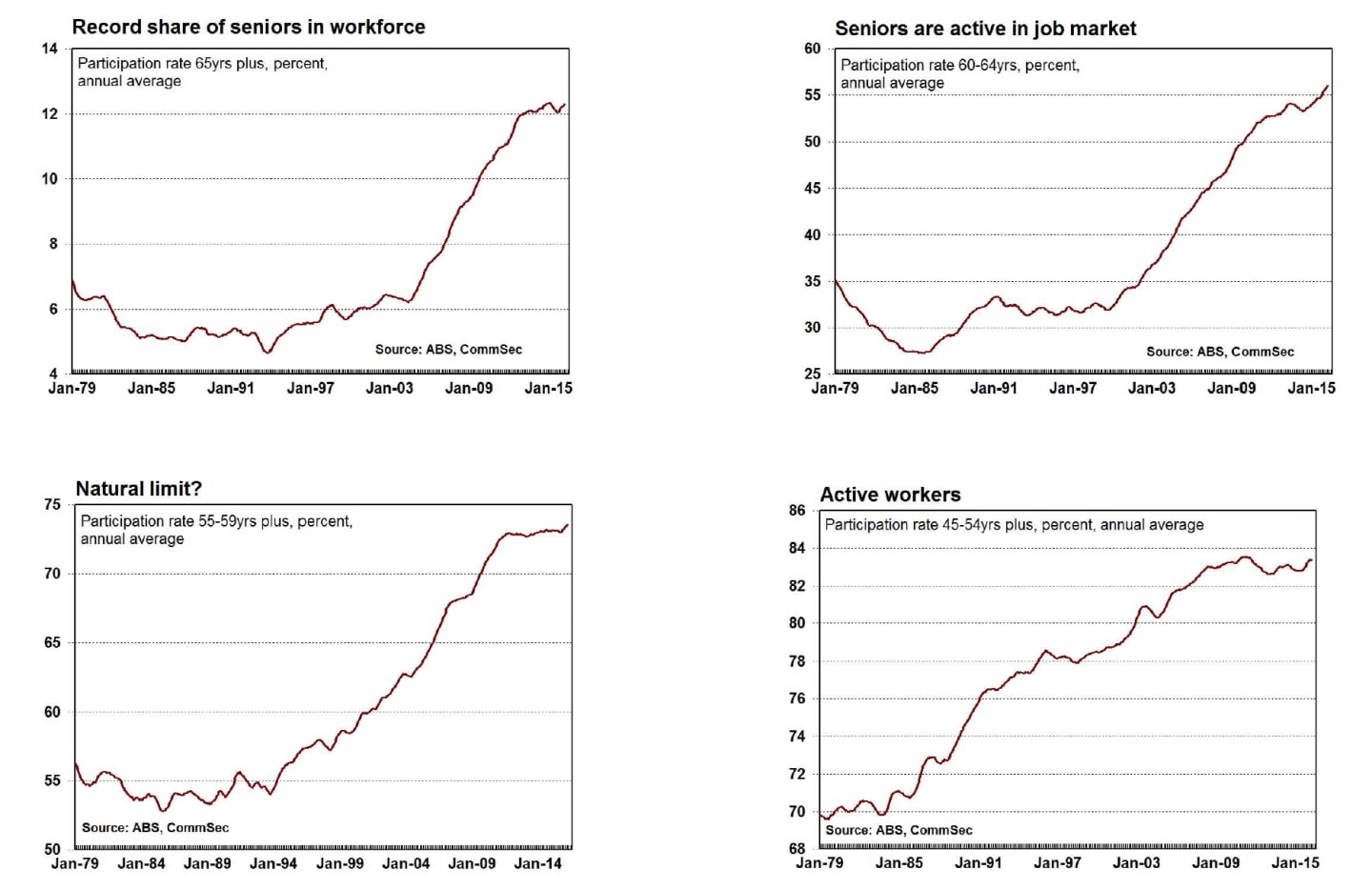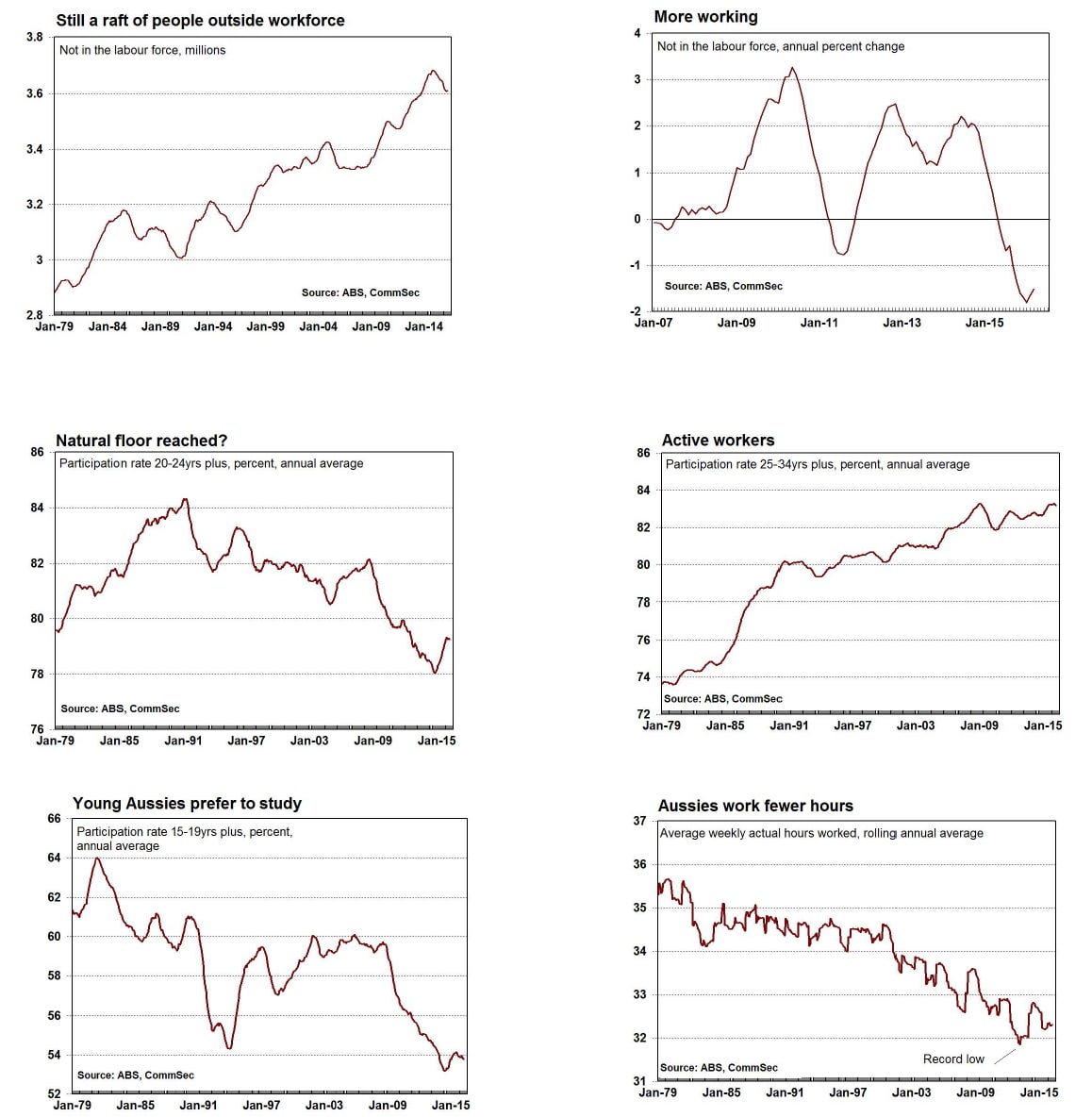Record share of seniors in workforce: CommSec's Craig James
Six months ago we noted that there were more people in jobs or looking for jobs than ever before across a raft of age categories. And at that time we suggested there were signs that participation rates seemed to be topping out – starting to trend sideways.
But interestingly over the past six months workforce participation rates for those older than 55 years have lifted and to fresh record highs (using 12-month rolling averages).

But while seniors are more active in the labour force, the participation rate for the 15-19 years grouping continues to trend lower. And the participation rate of 20-24 year Aussies has been largely stable and still well below the record highs set 25 years ago.
In rolling average terms, the overall labour force participation rate has been rising since May 2015 and now stands at a 2ó-year high of 65.0 percent, but still below the high of 65.5 per cent set in 2011. However a key reason why overall workforce participation is still below record levels is the lower participation rate of young people, with more choosing to do further studies before joining the workforce.
The latest job numbers also show that there are 3.66 million people over the age of 65 compared with 3.53 million Australians aged between 25-34 years. The number of people over the age of 65 is growing at a 3.4 percent annual rate. In contrast the number of people aged 25-34 is growing at a 1.58 percent annual rate (8-year low) and the number aged 35-44 is growing at a 0.21 percent annual rate – slowest rate recorded.
Australians are living longer and are opting to stay in the workforce longer – even if on a more casual or part-time basis.
But the trends are incredibly positive for Government finances and the economy as a whole. The risk had been that the ageing population would lead to lower tax revenues and rising health and social security spending. But a healthier aged population and greater workforce participation by seniors can buy the politicians more time in coming up with a new tax structure that will take the economy forward.
What do the figures show?
Detailed employment data
A raft of detailed job data for March was released yesterday. Data on employment by industry is released quarterly and the most recent data was published last month.
This month we focus on participation rates (proportion of people in jobs or looking for work) across age brackets and have assessed rolling annual averages.
In the year to March, the participation in the job market of those 25-34 years was 83.2 per cent, just off the record high of 83.3 percent set in the year to February.
The participation in the job market of those 35-44 years was 83.8 percent, a record high.
The participation in the job market of those 60-64 years was a record high of 56.0 percent.
The participation in the job market of those 65 years plus was 12.3 percent, a record high
The participation in the job market of those 55-59 years was 73.6 percent, a record high.
The participation in the job market of those 45-54 years was 83.4 per cent, just below the record high of 83.6 percent set in April 2011.
The participation in the job market of those 20-24 years was 79.2 per cent, up from the record low of 78.0 per cent set in November 2014.
The participation in the job market of those 15-19 years was 53.8 per cent, up from the record low of 53.2 percent set in July 2014.
The number of people in the civilian population aged 65 plus is 3.66 million, up 3.43 percent on a year ago.
Those aged 25-34 years total 3.53 million people (up 1.58 per cent) and those aged 35-44 years total 3.22 million people (up 0.21 per cent).
There are 3.61 million Aussies not in the labour force and the number is currently falling at a 1.51 per cent annual rate – just off the fastest annual decline seen in the past nine years.
Average hours worked in the year to March was 32.3 hours. The average measure has been largely unchanged over the past year but down on recent highs of 32.9 hours set in early 2012.

What is the importance of the economic data?
The Australian Bureau of Statistics (ABS) provides detailed labour market figures one week after releasing ‘top level’ statistics of employment & unemployment levels across states and territories. The detailed data is useful in identifying broader underlying trends and instructive about the health of the economy.

Craig James is the chief economist at CommSec.
